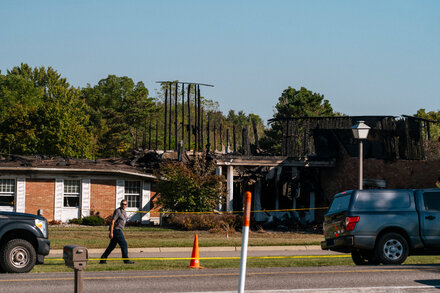Donald Trump has consistently positioned crime and public safety as central pillars of his political platform, employing a series of distinct tactics and rhetorical strategies throughout his public career. His approach has been characterized by a strong emphasis on “law and order,” robust support for law enforcement, and a willingness to advocate for federal intervention.
Emphasis on “Law and Order” Rhetoric
A cornerstone of Trump’s message regarding crime has been the unwavering call for “law and order.” This phrase, frequently invoked during his 2016 presidential campaign, throughout his presidency, and in subsequent political engagements, underpins his stance. His rhetoric often emphasizes strict enforcement, severe penalties for offenders, and a strong hand against perceived societal unrest.
“We must restore law and order to our country. We are going to be a nation of law and order, and we are going to be a nation of safety.”
This approach often contrasts with progressive criminal justice reforms, which he has frequently criticized as being “soft on crime” or detrimental to public safety. He has routinely expressed opposition to concepts such as “defund the police” movements and certain bail reform initiatives, arguing that they weaken law enforcement capabilities and embolden criminals.
Advocacy for Federal and Police Power
Trump has consistently advocated for increased resources and authority for police departments, both at the local and federal levels. During his presidency, he often presented himself as a staunch defender of law enforcement officers, frequently appearing at police events and voicing strong support for their work. He has also called for federal intervention in cities experiencing spikes in crime or civil unrest, particularly those led by Democratic administrations.
In 2020, amidst widespread protests and some instances of violence in major U.S. cities, Trump deployed federal agents to locations such as Portland, Oregon, and Chicago, Illinois. These actions, undertaken without the explicit consent of local authorities in some cases, were framed by his administration as necessary to restore order and protect federal property, sparking debate over federalism and the appropriate scope of federal intervention in local affairs.
Connecting Crime to Immigration and Urban Policy
Another consistent tactic in Trump’s discourse on crime has been to draw connections between public safety and immigration policy, particularly undocumented immigration. He has frequently asserted that a secure border is paramount for national security and public safety, arguing that lax immigration enforcement contributes to crime rates. This narrative often accompanies calls for stricter border controls, increased deportations, and more stringent vetting processes for immigrants.
Furthermore, Trump has often highlighted crime rates in major urban centers, frequently attributing them to what he characterizes as failed progressive governance. His commentary often focuses on specific cities and their Democratic leadership, portraying them as unable or unwilling to address rising crime, thereby necessitating a more robust “law and order” approach.
The cumulative effect of these tactics has been to define crime as a critical issue demanding a forceful, often federalized response, with an emphasis on punitive measures and strong support for law enforcement, forming a core component of his enduring political appeal.
Source: Read the original article here.





